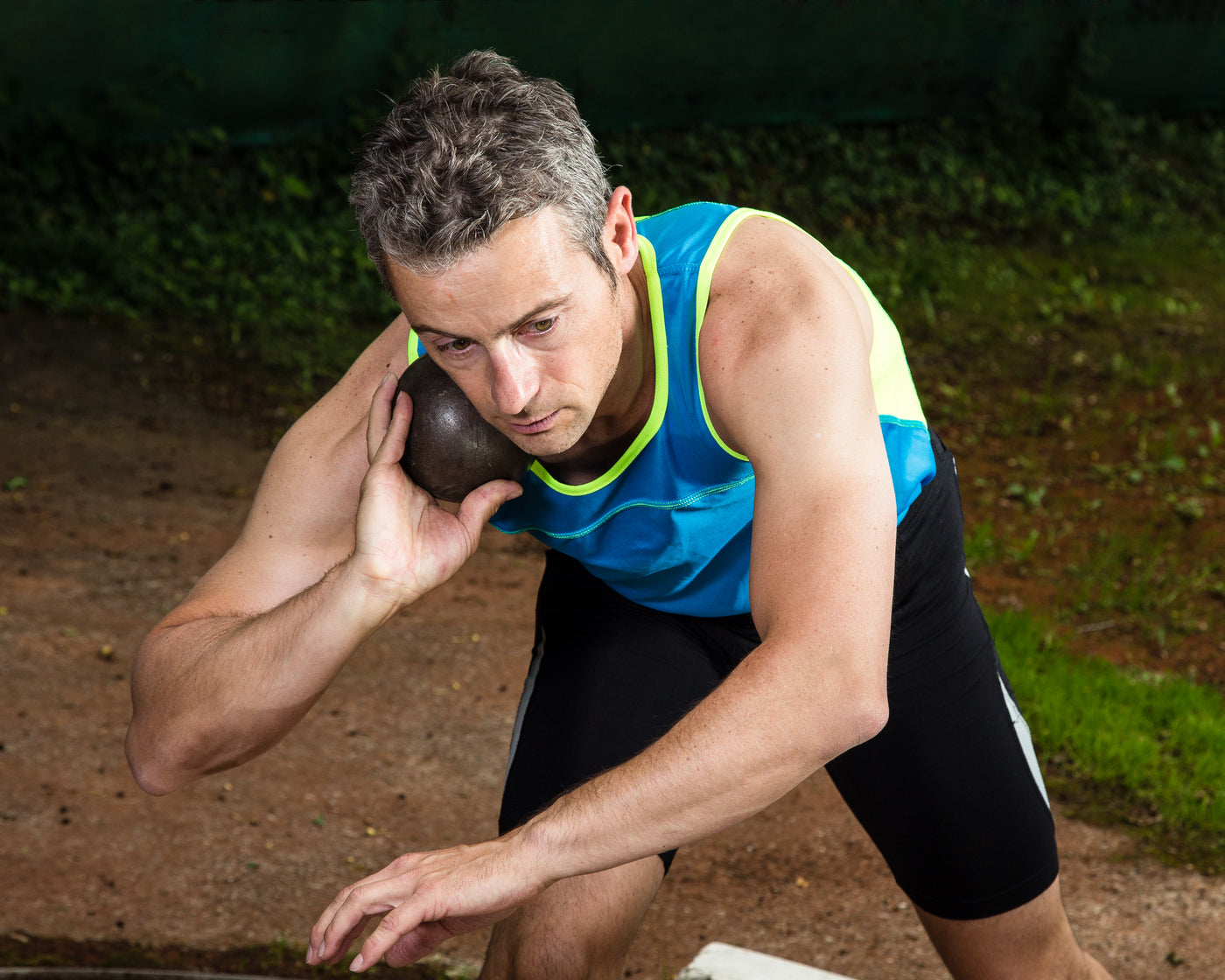Kinesiology of Exercise
Russian Twist
One of the key elements in sports that require swinging a bat, racquet, or club, or throwing an implement such as a baseball, football, javelin, shot put, or discus, is strong rotation of the
trunk. In some cases the trunk (shoulder) rotation develops up to 50 percent of the total force generated. This is why athletes in these sports should develop the muscles involved in order to produce powerful rotary force. One of the best advanced exercises to develop rotational power is the Russian twist.

Major Muscles and Actions Involved
In this exercise there is shoulder girdle rotation, which actively involves the internal oblique and external oblique. In this action you rotate your shoulders a full 180 degrees from a starting horizontal position. The rectus abdominis and the erector spinae contract isometrically to hold your trunk level in the horizontal position and stabilize the trunk.

Sports Uses
Pelvic and shoulder girdle rotation and the muscles involved are critical in all throwing, hitting, punching, and kicking actions. For example, when you throw a baseball or football, the oblique muscles pull your shoulders around after being placed on stretch by the preceding hip rotation. The same thing happens when you hit the ball in baseball and softball and when you execute different shots such as the tennis and racquetball forehand. The abdominal muscles used in the reverse trunk twist are also involved in rotating your upper trunk in various punches used in boxing and karate. Rotation of the pelvic and shoulder girdles is also needed in various side approach soccer kicks and in kicking in football (especially field goals). When you run, the obliques help to hold your pelvis and shoulders in place so that they do not rotate with each forward leg action.
Exercise Analysis
- In this exercise you must hold your body level at all times. If you find yourself weakening and your back going into hyperextension or greater flexion, then immediately stop doing the exercise. Keep in mind that when you rotate with your spine in a flexed or
hyperextended position, there are shearing forces that you have to contend with. - The Russian twist is often considered a specialized exercise because it closely duplicates some of the major skills involved in sports. For example, it duplicates the action of bringing the shoulders around in baseball hitting and pitching. It is one of the key actions in football quarterback throwing, and in the trunk rotation in forehand hits in the racquet sports, the golf swing, the shot put, and the discus and javelin throws.
- Because the Russian twist is fairlydifficult to execute, many people have modified its execution to make it easier and as a result, much less effective. One of the ways in which this has been done is to execute the exercise while in a seated position. You hold a medicine ball in both hands and rotate the shoulders to touch the floor with the ball on the left side and then up and over to the right side.
- Most of the movement, however, is not done against the direct pull of gravity so you do not gain the same amount of strength nor do you gain it through the same range of motion. In addition, in this position is very easy to assume a rounded spine which can prove to be dangerous when you rotate the shoulders. To get the full benefit of the Russian twist do it only as
directed above. - The Russian twist provides total involvement of the abdominal muscles. The rectus abdominis and transversus abdominis remain under isometric contraction to hold a stable position while the internal and external obliques are involved in their major action of shoulder (shoulder girdle) rotation. In addition, because of the relatively quick and forced inhalation and exhalation, there is strong contraction of the transversus abdominis.
- For further analysis check out our premium Kinesiology of Exercise EBooks.
